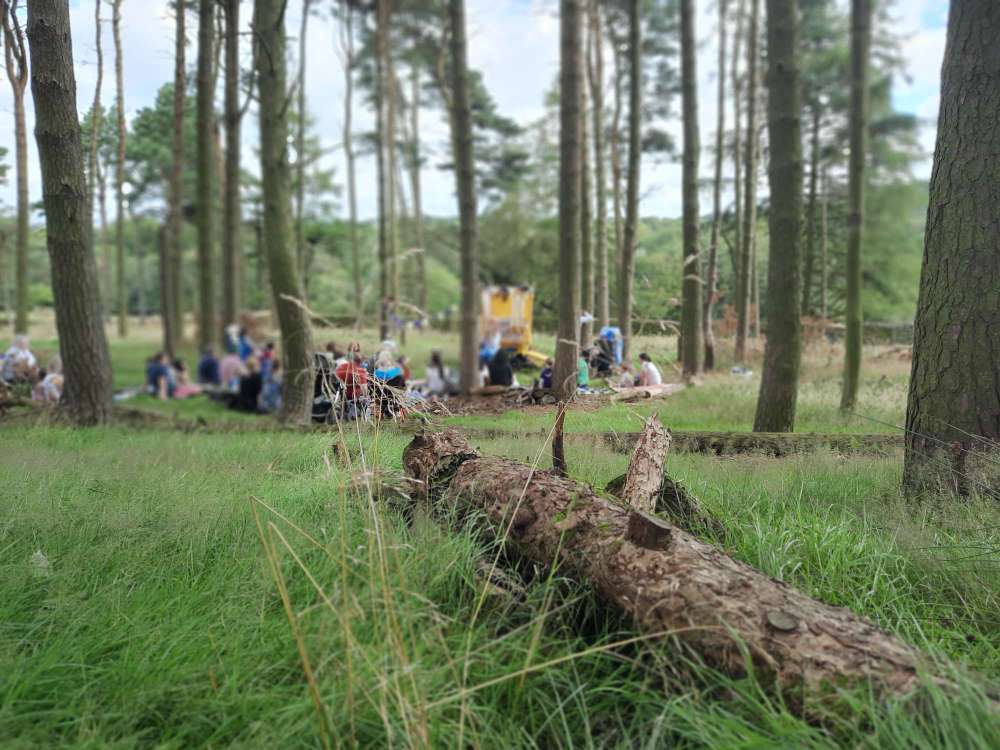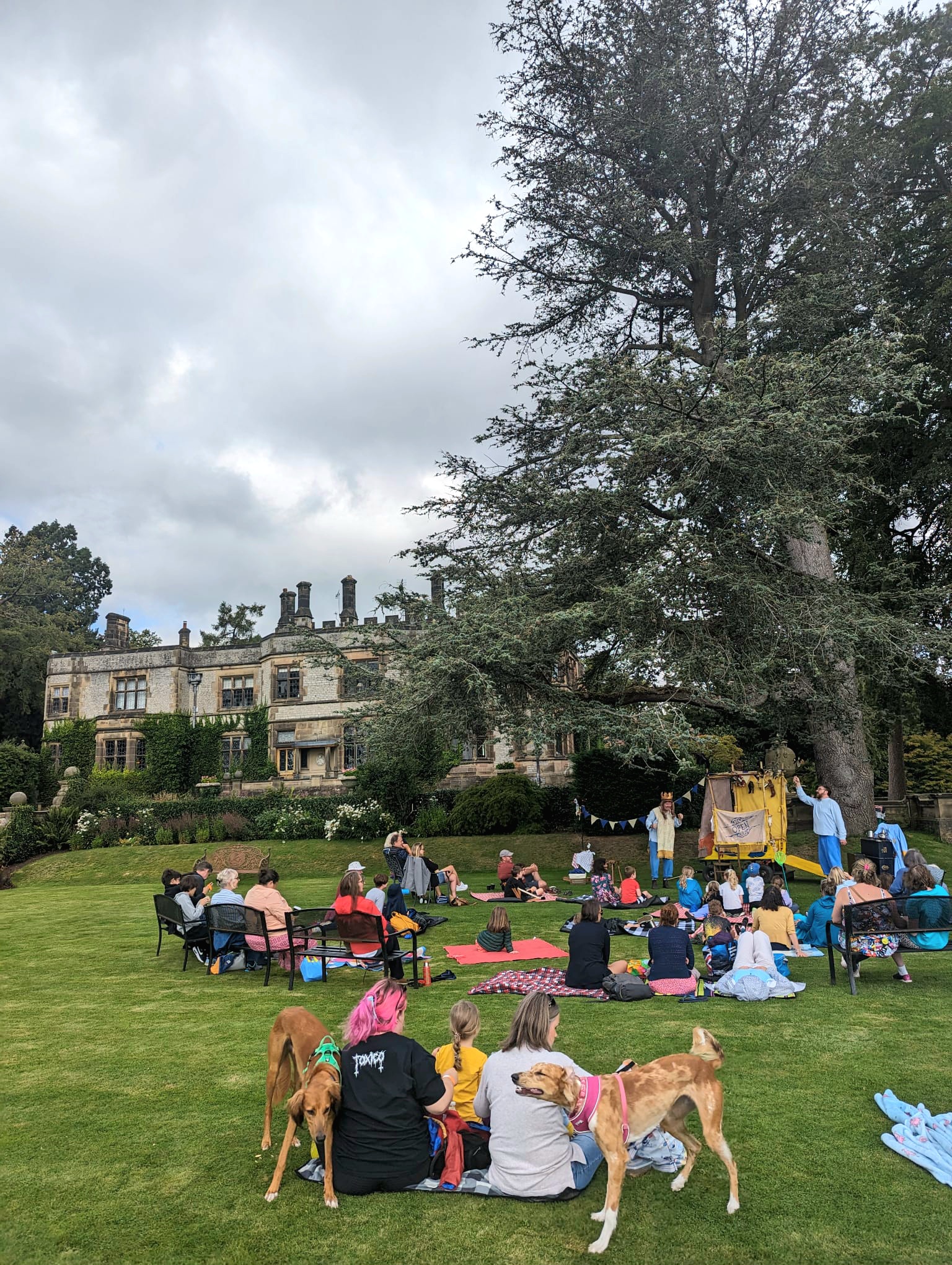
The Challenges
We are only a small company so for this outdoor theatre production I have overseen many elements; the designing, the making, the venue booking and the finances. It has been difficult to get a full tour this summer for a number of reasons, budget cuts,being the main one. The arts landscape has changed and it will continue to be in flux as we navigate through the cost of living crisis and with the prospect that the UK economy is unlikely to grow.
We already had our team in place for the summer show, with Phil as Director and Tara and myself as Designers and Makers. Phil and I were also the performers in our production Wagon Of Wonder. We managed to secure bookings through our networks and existing contacts. Marketing the shows is primarily Tara’s responsibility, but as a small company, we all share the load on all aspects of the business.

Designing for the Elements
I trained in design at Rose Bruford a long time ago, I actually think the best training is by doing and after 23 years of practice things are starting to make sense. The design for Wagon Of Wonder came about because we had a story we wanted to tell and we wanted to be creative. This led to raiding our store and reworking an old trolley we had. It fitted well with the story and so I got to work on thinking about what was needed to help tell the story.
My job as the designer is to support the story in every way I can, from music to lights to the costumes to props. When designing a touring production I know it needs to be easy to transport, set up, pack away and withstand the elements! For this production, I knew that the set would be used in a variety of locations, so, I created a design that was lightweight, modular, and easy to assemble and disassemble.
I used durable materials that could withstand the elements, and I designed the set in such a way that it could be easily adapted to suit the different performance spaces. The result was a set that was both functional and visually appealing, and that looked great in a variety of settings.

The Magic of Outdoor Theatre
When I design for an outdoor theatre production, I’m excited by all the natural elements we already have: trees, grassy areas, massive skies (cloudy or blue!), and even the noise! From traffic noise to kids playing to birds singing to the wind blowing through the trees, it’s all part of the magic.
Since it doesn’t make sense to compete with nature, it’s important to consider all these factors when designing. It’s always a good idea to have something to stand in front of, just in case there’s a dog walker passing by or a road behind you. But what if you’re performing on the moors, with nothing but the landscape behind you? Why compete with such a stunning backdrop?
The key is to position the show so that the audience is facing the best way. If there’s a particularly beautiful vista in one direction, I make sure the stage is facing that way, equally if there’s a distraction, such as a car park, I try to position the stage so that the audience’s backs are to it. One of the key questions I always ask myself is how can we enhance the magic of the venue, rather than compete with it?
I’ve designed and produced outdoor shows for many years, there’s something magical about a natural space. Perhaps it’s the shared experience with both audience, actors and landscape, but whatever the reason, there’s definitely a magic to telling stories to an audience in a natural setting.

Blog Contributor: Mark Hornsey